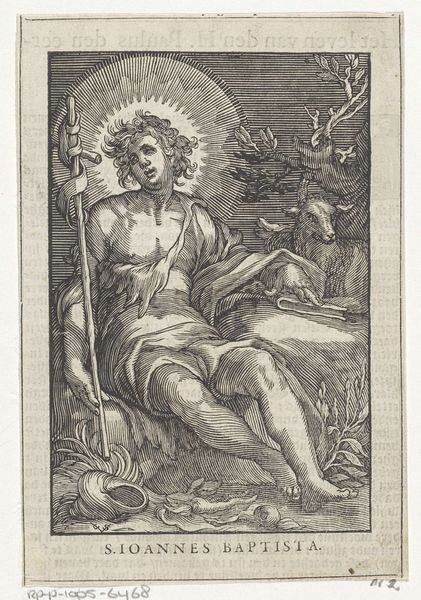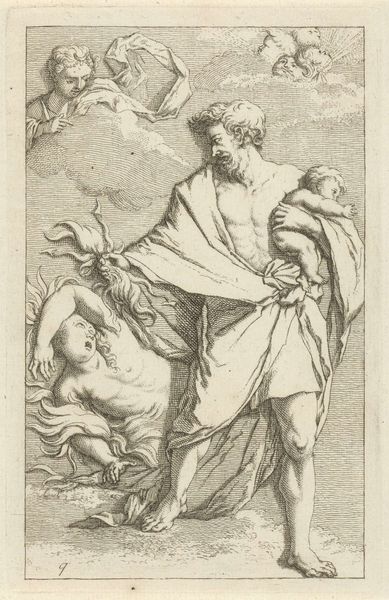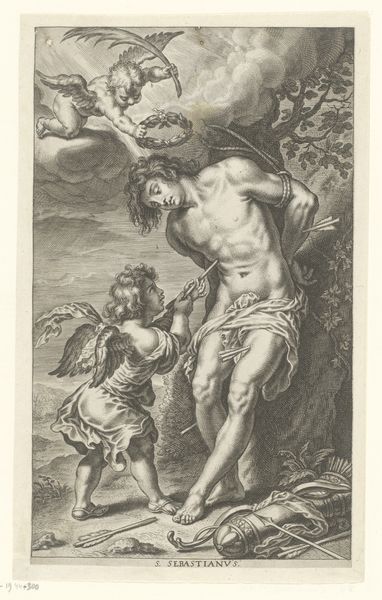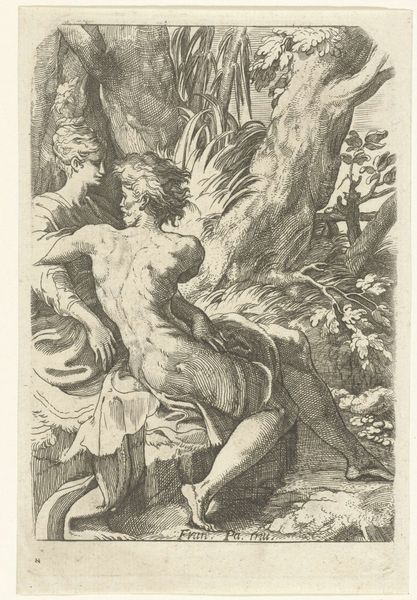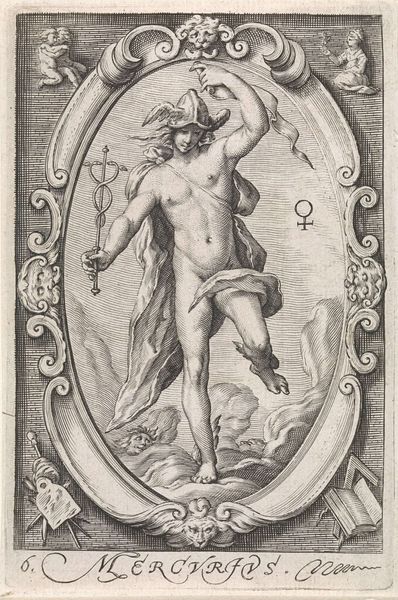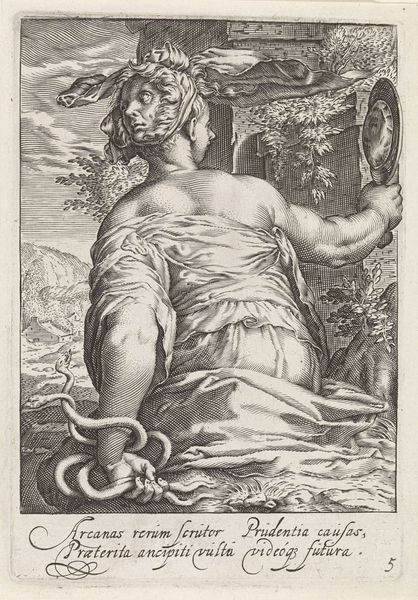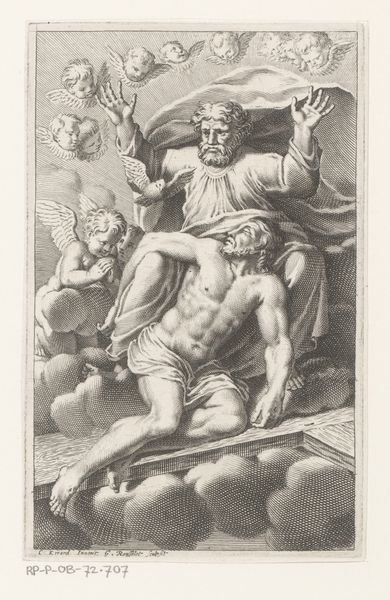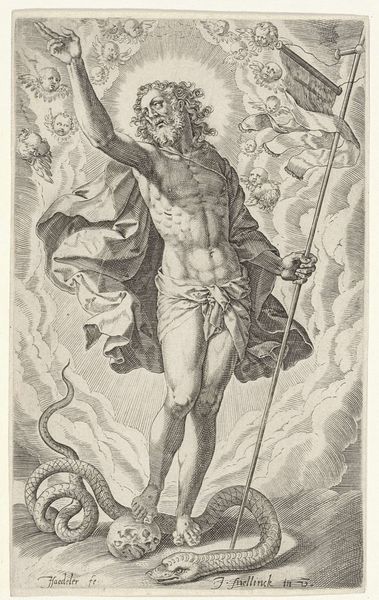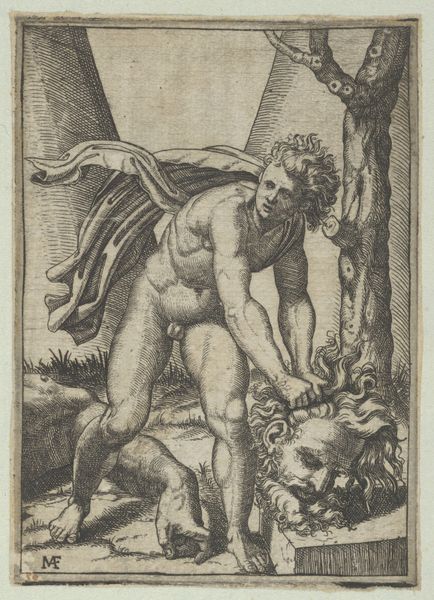
print, engraving
#
portrait
#
baroque
# print
#
figuration
#
line
#
history-painting
#
engraving
Dimensions: height 145 mm, width 90 mm
Copyright: Rijks Museum: Open Domain
Editor: So, here we have "Saint John the Baptist as a Hermit," an engraving from around 1590-1612, made by Boëtius Adamsz. Bolswert and housed in the Rijksmuseum. It's strikingly detailed. I am curious to hear your perspective. How do you interpret this work? Curator: What resonates with me immediately are the layered symbols interwoven into this depiction of St. John. Have you noticed how the lamb peacefully rests beside him? Editor: Yes, the lamb is hard to miss. It stands in contrast to St. John's ragged, almost wild appearance. Curator: Precisely! The lamb, a traditional symbol of Christ’s innocence and sacrifice, appears in juxtaposition with John. Think of John as the "voice crying out in the wilderness," his rough exterior signifying his break from societal norms to fulfill his prophetic role. What about the staff he carries? Editor: It seems like a simple walking stick. Curator: Perhaps, but consider its cruciform shape, hinting at the future sacrifice, the core of John's message, whilst also representing his role as a staff for his flock, guiding them towards righteousness. The shell nearby references baptism. What are your thoughts about that visual element? Editor: Interesting, so each piece contributes to a broader narrative! The shell signifies cleansing and rebirth, central to John's ministry. It does pull the piece together in a thematic way. Curator: It does. Images of saints are rarely just portraits, they're visual theologies meant to instill faith and offer pathways to spiritual understanding by providing moral direction. Editor: This makes the image a cultural artifact; a representation of 17th-century spiritual life beyond a single person's vision. Thanks, it provides helpful insights that might encourage viewers to consider the many layers.
Comments
No comments
Be the first to comment and join the conversation on the ultimate creative platform.
